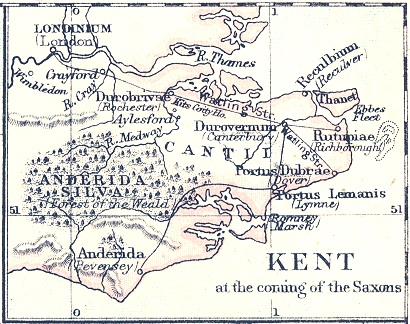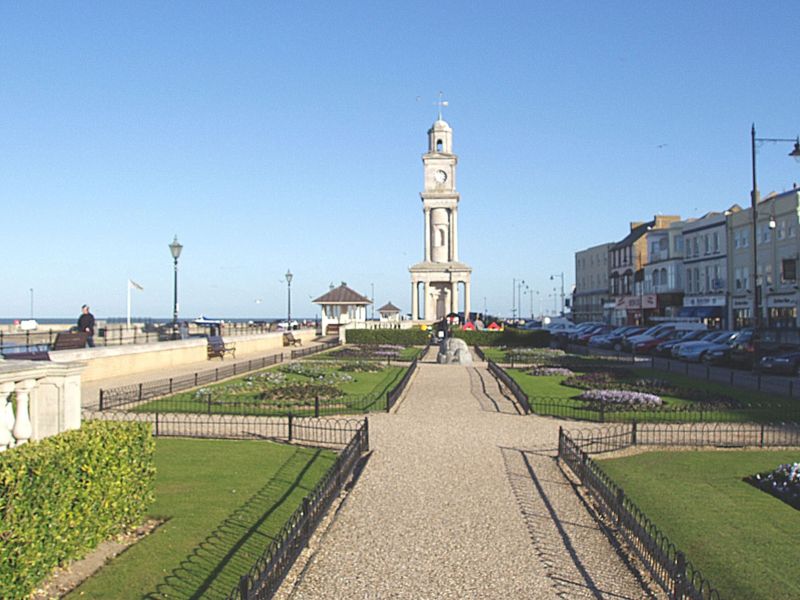|
Bishopstone Cliffs
Bishopstone Cliffs is a Local Nature Reserve in Reculver on the eastern outskirts of Herne Bay, Kent. It is owned and managed by Canterbury City Council. It is part of Thanet Coast Site of Special Scientific Interest, and Thanet Coast and Sandwich Bay Ramsar site and Special Protection Area. This is a grassland site on the top of cliffs, and it has some rare insect species. Sand martins nest in holes in the cliffs, and other birds include skylarks, meadow pipits and corn bunting The corn bunting (''Emberiza calandra'') is a passerine bird in the bunting family Emberizidae, a group now separated by most modern authors from the finches, Fringillidae. This is a large bunting with heavily streaked buff-brown plumage. The se ...s. There is public access to the site, most of which is within Reculver Country Park. References {{Local Nature Reserves in Kent Local Nature Reserves in Kent ... [...More Info...] [...Related Items...] OR: [Wikipedia] [Google] [Baidu] |
Reculver
Reculver is a village and coastal resort about east of Herne Bay on the north coast of Kent in south-east England. It is in the ward of the same name, in the City of Canterbury district of Kent. Reculver once occupied a strategic location at the north-western end of the Wantsum Channel, a sea lane that separated the Isle of Thanet and the Kent mainland until the late Middle Ages. This led the Romans to build a small fort there at the time of their conquest of Britain in 43 AD, and, starting late in the 2nd century, they built a larger fort, or ''castrum'', called ''Regulbium'', which later became one of the chain of Saxon Shore forts. Following the withdrawal of the Western Roman Empire in ca. early C4th, the Brythons again took control of the lands until Anglo-Saxon invasions shortly afterward. By the 7th century Reculver had become a landed estate of the Anglo-Saxon kings of Kent. The site of the Roman fort was given over for the establishment of a monastery dedi ... [...More Info...] [...Related Items...] OR: [Wikipedia] [Google] [Baidu] |
Herne Bay, Kent
Herne Bay is a seaside town on the north coast of Kent in South East England. It is north of Canterbury and east of Whitstable. It neighbours the ancient villages of Herne and Reculver and is part of the City of Canterbury local government district, although it remains a separate town with countryside between it and Canterbury. Herne Bay's seafront is home to the world's first freestanding purpose-built Clock Tower, built in 1837. From the late Victorian period until 1978, the town had the second-longest pier in the United Kingdom.Herne Bay Pier at www.theheritagetrail.co.uk (accessed 7 July 2008) The town began as a small shipping community, receiving goods and passengers from London en route to Canterbury and |
Canterbury City Council
Canterbury (, ) is a cathedral city and UNESCO World Heritage Site, situated in the heart of the City of Canterbury local government district of Kent, England. It lies on the River Stour. The Archbishop of Canterbury is the primate of the Church of England and the worldwide Anglican Communion owing to the importance of St Augustine, who served as the apostle to the pagan Kingdom of Kent around the turn of the 7th century. The city's cathedral became a major focus of pilgrimage following the 1170 martyrdom of Thomas Becket, although it had already been a well-trodden pilgrim destination since the murder of St Alphege by the men of King Canute in 1012. A journey of pilgrims to Becket's shrine served as the frame for Geoffrey Chaucer's 14th-century classic ''The Canterbury Tales''. Canterbury is a popular tourist destination: consistently one of the most-visited cities in the United Kingdom, the city's economy is heavily reliant upon tourism. The city has been ... [...More Info...] [...Related Items...] OR: [Wikipedia] [Google] [Baidu] |
Thanet Coast
Thanet Coast is an biological and geological Site of Special Scientific Interest which stretches along the coast between Whitstable and Ramsgate in Kent. It is a Geological Conservation Review site, and overlaps two Special Area of Conservations. It is also part of a Ramsar Site and a Special Protection Area. Part of it is a Local Nature Reserve, This site has unstable cliffs and foreshore, saltmarsh, lagoons, woodland and grassland. It has internationally important numbers of wintering birds and three nationally rare invertebrates. It is also an important Palaeocene site and paleobotanical locality. Natural England divides the Site of Special Scientific Interest intunits The Church Commissioners The Church Commissioners is a body which administers the property assets of the Church of England. It was established in 1948 and combined the assets of Queen Anne's Bounty, a fund dating from 1704 for the relief of poor clergy, and of the Eccle ... own some of the land on which ... [...More Info...] [...Related Items...] OR: [Wikipedia] [Google] [Baidu] |
Site Of Special Scientific Interest
A Site of Special Scientific Interest (SSSI) in Great Britain or an Area of Special Scientific Interest (ASSI) in the Isle of Man and Northern Ireland is a conservation designation denoting a protected area in the United Kingdom and Isle of Man. SSSI/ASSIs are the basic building block of site-based nature conservation legislation and most other legal nature/geological conservation designations in the United Kingdom are based upon them, including national nature reserves, Ramsar sites, Special Protection Areas, and Special Areas of Conservation. The acronym "SSSI" is often pronounced "triple-S I". Selection and conservation Sites notified for their biological interest are known as Biological SSSIs (or ASSIs), and those notified for geological or physiographic interest are Geological SSSIs (or ASSIs). Sites may be divided into management units, with some areas including units that are noted for both biological and geological interest. Biological Biological SSSI/ASSIs may ... [...More Info...] [...Related Items...] OR: [Wikipedia] [Google] [Baidu] |
Ramsar Site
A Ramsar site is a wetland site designated to be of international importance under the Ramsar Convention,8 ha (O) *** Permanent 8 ha (P) *** Seasonal Intermittent < 8 ha(Ts) ** es on inorganic soils: *** Permanent (herb dominated) (Tp) *** Permanent / Seasonal / Intermittent (shrub dominated)(W) *** Permanent / Seasonal / Intermittent (tree dominated) (Xf) *** Seasonal/intermittent (herb dominated) (Ts) ** Marshes on soils: *** Permanent (non-forested)(U) *** Permanent (forested)(Xp) ** Marshes on inorganic or peat soils: *** Marshes on inorganic or peat soils / High altitude (alpine) (Va) *** Marshes on inorganic or peat soils / Tundra (Vt) * Saline, |
Special Protection Area
A Special Protection Area (SPA) is a designation under the European Union Directive on the Conservation of Wild Birds. Under the Directive, Member States of the European Union (EU) have a duty to safeguard the habitats of migratory birds and certain particularly threatened birds. Together with Special Areas of Conservation (SACs), the SPAs form a network of protected sites across the EU, called Natura 2000. Each SPA has an EU code – for example the North Norfolk Coast SPA has the code ''UK9009031''. In the United Kingdom As at 21 September 2006, there were 252 classified SPAs and 12 proposed SPAs in England, Scotland, Wales and Northern Ireland. The Conservation (Natural Habitats etc.) Regulations 1994 implement the terms of the Directive in Scotland, England and Wales. In Great Britain, SPAs (and SACs) designated on land or in the intertidal area are normally also notified as Sites of Special Scientific Interest (SSSIs), and in Northern Ireland as Areas of Special Scientific ... [...More Info...] [...Related Items...] OR: [Wikipedia] [Google] [Baidu] |
Sand Martin
The sand martin (''Riparia riparia''), also known as the bank swallow (in the Americas), collared sand martin, or common sand martin, is a migratory passerine bird in the swallow family. It has a wide range in summer, embracing practically the whole of Europe and the Mediterranean countries and across the Palearctic to the Pacific Ocean. It is a Holarctic species also found in North America. It winters in eastern and southern Africa, South America, and the Indian Subcontinent. Taxonomy This species was first described by Carl Linnaeus in his 1758 10th edition of ''Systema Naturae'', and originally named ''Hirundo riparia''; the description consisted of the simple "''H rundocinerea, gula abdomineque albis''" – "an ash-grey swallow, with white throat and belly" – and the type locality was simply given as "Europa". The specific name means "of the riverbank"; it is derived from the Latin ''ripa'' "riverbank". The pale martin of northern India and southeastern China i ... [...More Info...] [...Related Items...] OR: [Wikipedia] [Google] [Baidu] |
Skylark
''Alauda'' is a genus of larks found across much of Europe, Asia and in the mountains of north Africa, and one of the species (the Raso lark) endemic to the islet of Raso in the Cape Verde Islands. Further, at least two additional species are known from the fossil record. The current genus name is from Latin ''alauda'', "lark". Pliny the Elder thought the word was originally of Celtic origin. Taxonomy and systematics The genus ''Alauda'' was introduced by the Swedish naturalist Carl Linnaeus in 1758 in the tenth edition of his ''Systema Naturae''. The type species was subsequently designated as the Eurasian skylark. The genus ''Alauda'' has four extant and at least two extinct species. Formerly, many other species have also been considered to belong to the genus. Extant species The genus contains four species: Extinct species * †''Alauda xerarvensis'' (late Pliocene of Varshets, Bulgaria) * †''Alauda tivadari'' (late Miocene of Polgardi, Hungary) Former species Previ ... [...More Info...] [...Related Items...] OR: [Wikipedia] [Google] [Baidu] |
Meadow Pipit
The meadow pipit (''Anthus pratensis'') is a small passerine bird, which breeds in much of the Palearctic, from southeastern Greenland and Iceland east to just east of the Ural Mountains in Russia, and south to central France and Romania; an isolated population also occurs in the Caucasus Mountains. It is migratory over most of its range, wintering in southern Europe, North Africa, and south-western Asia, but is resident year-round in western Europe, though even here many birds move to the coast or lowlands in winter. Taxonomy The meadow pipit was formally described by Swedish naturalist Carl Linnaeus in 1758 in the 10th edition of his ''Systema Naturae'' under the binomial name ''Alauda pratensis''. The type locality is Sweden. The meadow pipit is now the type species of the genus ''Anthus'' that was introduced in 1805 by German naturalist Johann Matthäus Bechstein. The species is monotypic; no subspecies are recognised. The generic name ''Anthus'' is the Latin name for a ... [...More Info...] [...Related Items...] OR: [Wikipedia] [Google] [Baidu] |
Corn Bunting
The corn bunting (''Emberiza calandra'') is a passerine bird in the bunting family Emberizidae, a group now separated by most modern authors from the finches, Fringillidae. This is a large bunting with heavily streaked buff-brown plumage. The sexes are similar but the male is slightly larger than the female. Its range extends from Western Europe and North Africa across to northwestern China. Taxonomy The corn bunting was formally described by the Swedish naturalist Carl Linnaeus in 1758 in the tenth edition of his ''Systema Naturae'' and retains its original binomial name of ''Emberiza calandra''. The type locality is Sweden. The genus name ''Emberiza'' is from Old German ''Embritz'', a bunting. The specific ''calandra'' is from Ancient Greek ''kalandros'', the calandra lark. The corn bunting has sometimes been placed in its own monotypic genus ''Miliaria''. Two subspecies are recognised: * ''E. c. calandra'' Linnaeus, 1758 – northwest Africa, Canary Islands and Europe to ... [...More Info...] [...Related Items...] OR: [Wikipedia] [Google] [Baidu] |






